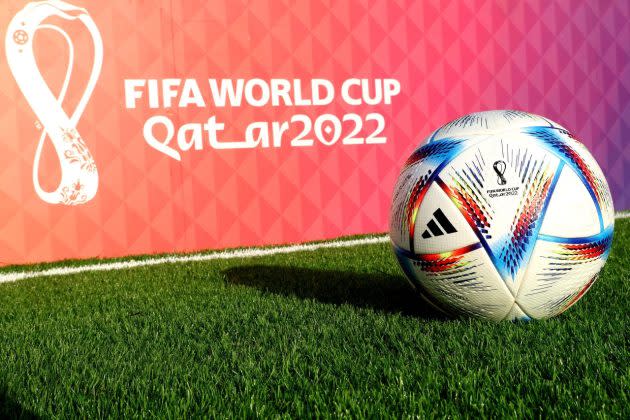World Cup’s Booming Ball Business Started in a Pakistani Saddle Shop

Forty percent of soccer balls used worldwide are produced in a small town in Pakistan called Sialkot. Nearly 1,000 factories in town make the leather-covered orbs, and the region produces 30 million balls a year, some of them for the large global brands like Adidas. For the 2018 World Cup in Russia, Sialkot factories exported approximately 37 million balls.
The natural questions are how and why? The simple answer: British colonialism.
More from Sportico.com
Nike Sponsoring 48 Players at U.S. Open, the Most of Any Brand
Adidas Sued Again Over Authenticity of 'Authentic' NHL Jerseys
Charles Goodyear introduced the first modern soccer ball in 1855. Made from vulcanized rubber, the ball offered considerable advantages over previous options, which included human skulls and stuffed pig bladders, but it, too, was imperfect—it bounced unpredictably. Goodyear’s ball dominated for less than a decade, before the English Football Association published common standards that called for a perfectly spherical ball with an outer leather casing.
A British army officer stationed in Pakistan had one such leather-bound ball that needed repair. “He grew tired of waiting and asked a local saddle maker to fix it, and Sialkot’s ball production was born from there,” said Eric Verhoogen, an economics professor at Columbia University’s School of International and Public Affairs who has consulted with Sialkot companies on production efficiency.
What started as a small family business soon became Sialkot’s main economic activity. “But the interesting part of the story is that Pakistanis don’t play soccer,” Verhoogen said. “The soccer ball industry essentially grew up to serve the British colonists, but it served other colonies, too, not just the ones in Pakistan.”
The biggest company in Sialkot is Forward Sports, which makes the balls for Adidas, the official licensee of FIFA World Cup balls since 1982. “Forward sports is the biggest company in Sialkot; 3- to 4,000 people work for Forward Sports,” said Waleed Tariq, business development manager of Bola Gema, a soccer ball factory in town, which produces around 160,000 balls in a month for international retailers such as Decathlon and Stadium Sports. “They make the match balls, but they also make [balls of varying sophistication] for the public.”
Qatar’s World Cup ball, Al Rihla, is as sophisticated as it gets. It’s the fastest ball in World Cup history, and it’s the first official match ball made with thermo bonding instead of hand stitching, Adidas said in an email. It’s also the first ball made with water-based inks and glues, a new standard that increases sustainability.
Official match balls have been produced in Pakistan and China, Adidas said, adding that there are 20 balls for each of the 64 matches of the tournament.
The official match ball won’t be available at retail, but consumers can purchase replicas of Al Rihla for $40 to $165, depending on the technology incorporated.
“Match balls are costly,” Tariq said. “These new technologies will be available, but probably for a very high level of matches. In our experience, the biggest challenge is that customers are not ready to pay the price.”
It always comes back to money. Sialkot’s market share in the sector is declining partly because there are cheaper balls. Those made in Pakistan can cost from $3 to $6 depending on the technology used, but more brands are opting for less expensive machine-stitched balls made in China. Meanwhile, thermo bonding and other technologies present another sort of competition. “The high-end balls now are no longer hand stitched,” Verhoogen said. “Pakistani producers have been squeezed out from both the high and the low end.”
That may be foreboding for the future, but right now Al Rihla, the 14th ball made for the World Cup, is flying high.
Best of Sportico.com
